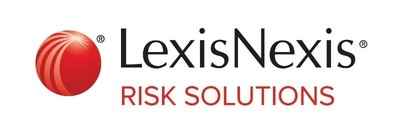Financial Services Firms Spend $180.9 Billion on Financial Crime Compliance, According to LexisNexis Risk Solutions Global Study

Global Survey of Financial Crime Compliance Professionals Points to United Kingdom,Germany and United States as Highest Spenders
ATLANTA,April 7,2020 -- Today,LexisNexis® Risk Solutions released its True Cost of Financial Crime Compliance Global Report,which provides global industry-driven insights for financial services firms across the Asia Pacific (APAC) region,Europe,the Middle East and Africa (EMEA),Latin America (LATAM) (including Mexico) and the U.S. and Canada. The report reveals that the projected total cost of financial crime compliance in these markets amounts to $180.9 billion.
The survey of 898 decision-makers who oversee financial crime compliance and compliance operations at their companies solicited responses on processes such as sanctions monitoring,know your customer (KYC) remediation,anti-money laundering (AML) and transaction monitoring,among others.
Key findings from the LexisNexis Risk Solutions True Cost of Financial Crime Compliance Global Report:
Europe and U.S. Hit Hardest by Costs-- The largest regional markets for financial crime compliance are Europe and United States. Significantly more financial institutions in these markets-- more than 6,000 in the United States alone-- drive higher total spend on financial crime compliance,compared to other regions. Average annual financial crime compliance costs are highest for mid/large sized financial institutions (more than $10 billion in total assets) in the United Kingdom,Germany,France,Italy and the Netherlands.
Labor is Single Largest Driver of High Compliance Costs-- Although there are a number of factors that contribute to higher financial crime compliance costs,including increasingly complex regulations,data privacy limitations,sanctions violations and the level of skilled labor,the global average distribution of compliance costs are 57% labor,40% technology and 3% other,with EMEA leading labor cost spend at 62%. In APAC,labor represents a significant component of financial crime compliance costs,averaging 54% of costs for those surveyed and scaling upwards for larger firms. Labor costs rose an average of 9%-- 10% during the past 24 months across APAC.
Due Diligence Efforts Take Longer and Increase Costs-- Complying with increasingly complex regulations causes financial firms in Europe to take longer than any other market to complete business account due diligence which increases the cost of financial crime compliance overall. For example,the average time required to onboard a mid-sized corporation has increased from 21 hours in 2017 to 36 hours in 2019.
Financial Institutions Identify Non-Bank Payment Providers as a Source of Risk-- According to financial institution professionals surveyed,non-bank payment providers create additional compliance challenges and risk for financial firms,particularly in LATAM and Canada. Across all regions,however,the negative impact is broad,including increased alert volumes,more correspondent banking risk,greater compliance team stress,and higher technology and labor costs.
Financial Crime Compliance Challenges Negatively Impact Productivity and Employee Retention-- Financial crime compliance challenges and issues have a negative impact on productivity at financial institutions,particularly in EMEA and LATAM. Across all regions,costs rose 7% annually during the past two years,with financial crime compliance processes and burdens negatively affecting productivity and new customer acquisition efforts. Additionally,compliance teams are stressed to a degree where managers worry about retaining skilled professionals-- 67% of compliance decision-makers are concerned with job satisfaction within their workforce.
Daniel Wager,vice president,global financial crime compliance strategy for LexisNexis Risk Solutions,said,"As criminals become more sophisticated,a multi-layered solution approach to financial crime compliance is crucial to facilitating a more cost-effective,efficient compliance approach,as well as one that provides benefit to the larger organization. Financial institutions should investigate both the physical and digital identity attributes of their customers,leveraging data analytics to assess risks and behaviors in real time."
Wager continued,"There is now an increased recognition among financial institutions that financial crime compliance initiatives provide broader benefits. Utilizing the right technologies as compliance workforces grow allows organizations to decrease the cost of compliance per full-time equivalent (the labor component) and mitigate costs associated with lost business due to increased friction at onboarding. Keeping FTE costs lower is essential to profitability,since labor tends to account for significant increased compliance expenses year-over-year."
Download theTrue Cost of Financial Crime Compliance Global Report.
About LexisNexis Risk Solutions
LexisNexis® Risk Solutions harnesses the power of data and advanced analytics to provide insights that help businesses and governmental entities reduce risk and improve decisions to benefit people around the globe. We provide data and technology solutions for a wide range of industries including insurance,financial services,healthcare and government. Headquartered in metro Atlanta,Georgia,we have offices throughout the world and are part of RELX (LSE: REL/NYSE: RELX),a global provider of information-based analytics and decision tools for professional and business customers across industries. For more information,please visit https://risk.lexisnexis.com/and www.relx.com.
Media Contacts:
Marcy Theobald
LexisNexis® Risk Solutions
678.694.6681
marcy.theobald@lexisnexisrisk.com
Logo- http://cusmail.com/res/2023/07-23/21/04bdf03a983659277e72efd7bb5443a3.jpg